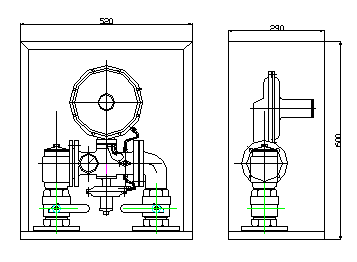
Nov . 13, 2024 11:57
Back to list
natural gas distribution station
The Role of Natural Gas Distribution Stations in Energy Infrastructure
Natural gas is a crucial component of the modern energy landscape, playing a pivotal role in heating homes, powering industries, and generating electricity. As the demand for cleaner energy sources grows, natural gas has emerged as a preferred option due to its lower carbon emissions compared to coal and oil. Central to the effective distribution of this vital resource are natural gas distribution stations, which serve as the backbone of the gas infrastructure. This article explores the functions, benefits, and challenges associated with natural gas distribution stations.
Understanding Natural Gas Distribution Stations
Natural gas distribution stations, often referred to as compressor stations or distribution points, are facilities that facilitate the flow of natural gas from high-pressure pipelines to end-users, including residential, commercial, and industrial customers. These stations play a critical role in ensuring that consumers receive a reliable and consistent supply of natural gas.
At these stations, the high-pressure gas from transmission pipelines is reduced to a lower pressure suitable for distribution. This process involves several key components, including pressure regulators, compressors, and metering equipment. The regulators maintain the pressure within a safe range, while the compressors help maintain flow rates, ensuring that gas can travel efficiently through the distribution network.
Benefits of Natural Gas Distribution Stations
1. Reliability of Supply One of the primary advantages of natural gas distribution stations is their ability to provide a stable and reliable supply of gas. By compressing and regulating gas pressure, these stations ensure that fluctuations in demand can be met without interruption, even during peak usage periods.
2. Safety Precautions Safety is paramount in the distribution of natural gas. Distribution stations are equipped with advanced monitoring and control systems that detect leaks and gauge pipeline integrity. Regular maintenance and inspections further enhance safety, minimizing the risk of accidents in urban and rural areas alike.
3. Environmental Benefits As a cleaner fossil fuel, natural gas contributes to lower greenhouse gas emissions when combusted compared to other fossil fuels. By facilitating the use of natural gas, distribution stations support efforts towards reducing air pollution and tackling climate change.
natural gas distribution station

4. Economic Efficiency Natural gas is often more cost-effective than other energy sources. The establishment of efficient distribution stations reduces transportation costs, allowing for lower prices passed on to consumers. Moreover, jobs related to construction, operation, and maintenance of these facilities contribute to local economies.
Challenges Facing Natural Gas Distribution Stations
Despite their many benefits, natural gas distribution stations face several challenges
1. Aging Infrastructure Many distribution networks were built decades ago and require upgrades to meet current safety and efficiency standards. Investing in new technologies and materials is essential for maintaining the reliability of the infrastructure as demand for natural gas continues to grow.
2. Regulatory Compliance Distribution stations must adhere to stringent regulations concerning safety, emissions, and environmental impact. Navigating this regulatory landscape can be complex and may impose additional costs on operators.
3. Market Fluctuations The natural gas market is sensitive to global economic conditions, changes in supply and demand, and competition from other energy sources. Fluctuations can affect the viability of distribution stations, requiring operators to adopt flexible strategies.
4. Technological Change Advances in renewable energy and energy storage technologies pose both a challenge and an opportunity. As the energy landscape evolves, natural gas distribution stations will need to adapt, possibly incorporating hybrid systems that accommodate renewable energy sources.
Conclusion
Natural gas distribution stations are vital components of the energy infrastructure, enabling the efficient and safe delivery of natural gas to consumers. As society gradually shifts towards more sustainable energy solutions, these stations will play a key role in bridging traditional fossil fuel use with cleaner energy practices. By continuing to invest in infrastructure and embrace technological advancements, we can ensure that natural gas remains a reliable energy source well into the future.
Next:
Latest news
-
Safety Valve Spring-Loaded Design Overpressure ProtectionNewsJul.25,2025
-
Precision Voltage Regulator AC5 Accuracy Grade PerformanceNewsJul.25,2025
-
Natural Gas Pressure Regulating Skid Industrial Pipeline ApplicationsNewsJul.25,2025
-
Natural Gas Filter Stainless Steel Mesh Element DesignNewsJul.25,2025
-
Gas Pressure Regulator Valve Direct-Acting Spring-Loaded DesignNewsJul.25,2025
-
Decompression Equipment Multi-Stage Heat Exchange System DesignNewsJul.25,2025

